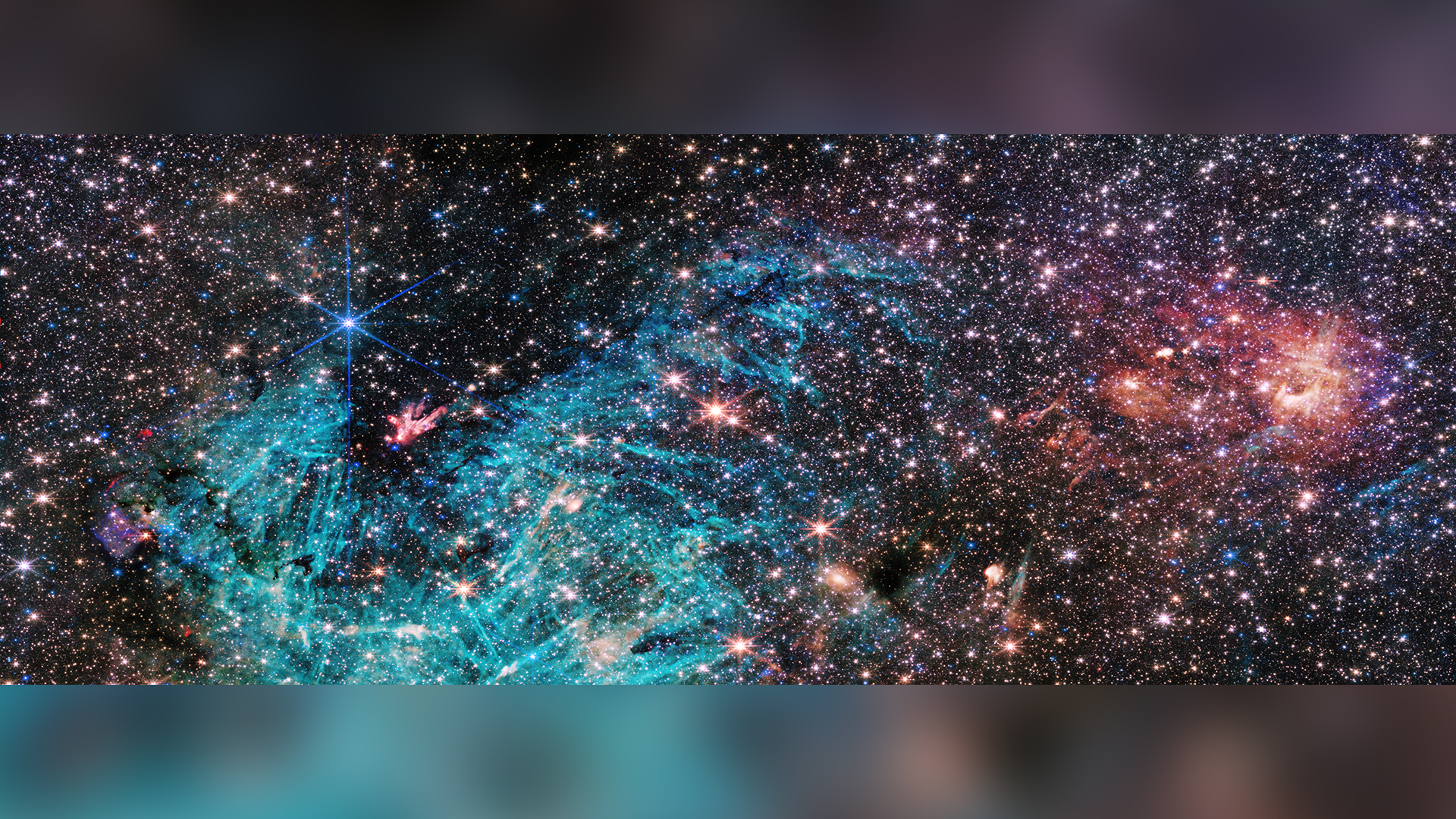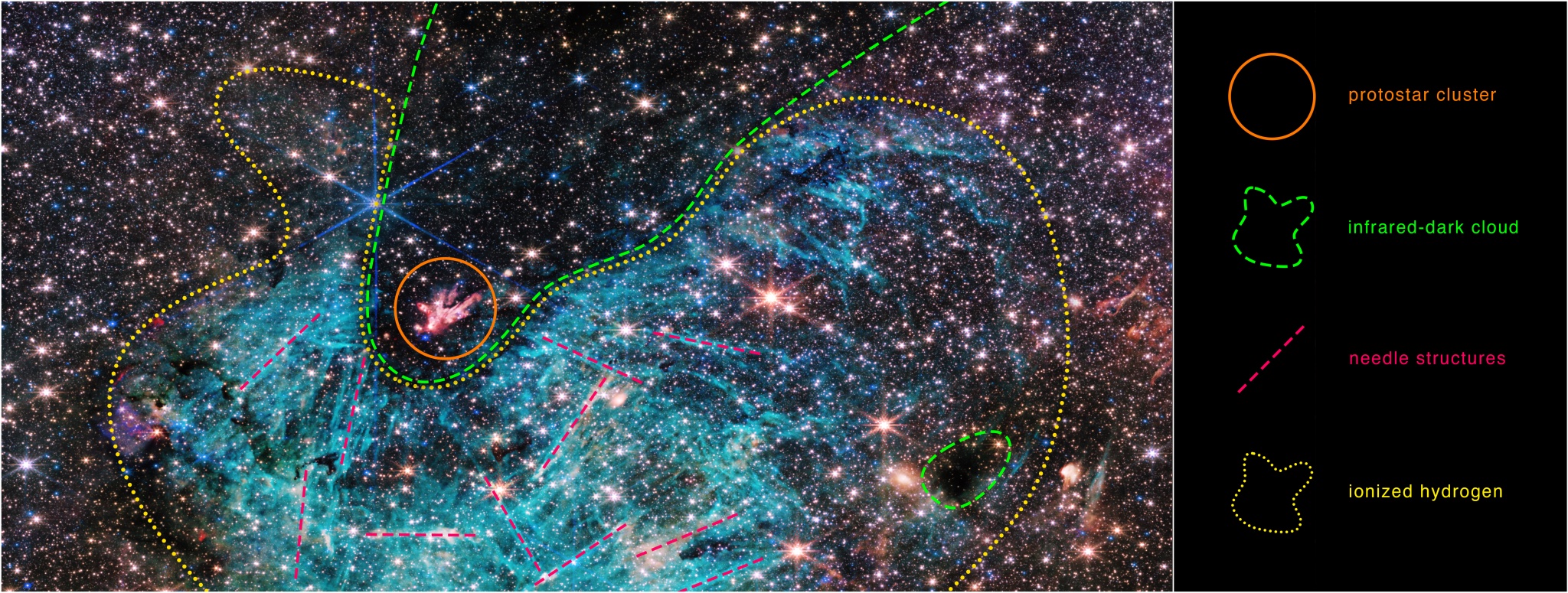
A dazzling new image from the James Webb Space Telescope (JWST) reveals about 500,000 stars, including a dense cluster of newborn giant stars, in what NASA describes as the "extreme cosmic environment" near the core of the Milky Way.
The subject, Sagittarius C, is an active star-forming region about 300 light-years from our galaxy's central supermassive black hole, known as Sagittarius A*. The reddish-orange area of the image is a cluster of protostars, while the cyan area is a previously unseen region of ionized hydrogen gas containing needle-like structures that astronomers don't fully understand. It's lit by the ultraviolet light from massive young stars. The entire region seen here spans about 50 light-years — about 10 times the distance between the sun and the next-closest star, Proxima Centauri.

Sagittarius C is fascinating to scientists because it's so densely packed and close to the galactic nucleus.
"The galactic center is the most extreme environment in our Milky Way galaxy, where current theories of star formation can be put to their most rigorous test," Jonathan Tan, a professor of astronomy at the University of Virginia (UV) and an adviser on the observations, said in a statement.
Within the busy stellar cluster is a star with more than 30 times the sun's mass. Stars like these could help astronomers tease out other riddles of the universe as a whole.
"Webb reveals an incredible amount of detail, allowing us to study star formation in this sort of environment in a way that wasn't possible previously," said Samuel Crowe, an undergraduate student at UV and the team's principal investigator. He added that massive stars are factories that produce heavy elements in their nuclear cores, so understanding them better is like learning the origin story of much of the universe.
JWST took this image using its Near-Infrared Camera, which sees infrared light — normally invisible to the human eye — as heat. With this powerful camera, JWST has succeeded at peering through vast cosmic dust clouds to reveal the faintest galaxy in the known universe, some of the earliest black holes ever discovered and countless other structures that would be otherwise lost to the fog of space.







